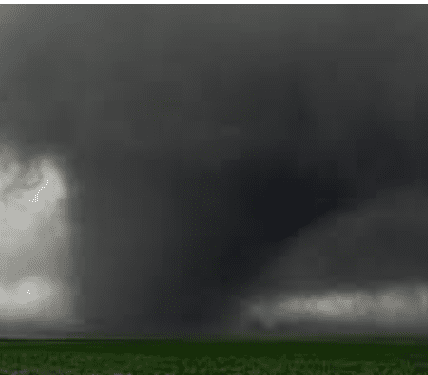Navigating the Dual Crisis: Lake Powell’s Diminishing Water Capacity Amid Drought and Sedimentation
Lake Powell’s Ongoing Struggle: A Confluence of Depleting Reservoir Capacity and Prolonged Drought
Lake Powell, the second-largest human-made reservoir in the United States, finds itself in the midst of a dual crisis. Not only is the reservoir grappling with the severe impact of a multiyear drought, but it is also witnessing a gradual reduction in its total storage capacity. The recent report by the US Geological Survey and the Bureau of Reclamation paints a concerning picture, indicating a notable 7% decline in potential storage capacity since the construction of Glen Canyon Dam in 1963. This sobering revelation adds another layer of complexity to the challenges posed by the relentless drought affecting the region.
Unraveling the Annual Erosion of Storage Capacity
The report sheds light on a consistent annual erosion of storage capacity, averaging approximately 33,270 acre-feet, equivalent to 11 billion gallons, per year between 1963 and 2018. To contextualize the severity of this loss, it’s essential to grasp that this annual decline could fill the Reflecting Pool on the National Mall in Washington, D.C., about 1,600 times over the course of those years. This ongoing reduction is not solely attributable to the arid conditions but is significantly exacerbated by sedimentation flowing into the reservoir from the Colorado and San Juan rivers.
Sedimentation Emerges as a Silent Adversary

Sediments carried by these rivers settle at the bottom of Lake Powell, contributing to the reduction of its overall water-holding capacity. This silent adversary, compounded by the arid climate, has accelerated the challenges posed by the persistent drought. As of the latest data available on Monday, Lake Powell stands at around 25% of its full capacity, according to the Bureau of Reclamation. This alarming decline amplifies the existing issues in a region already grappling with water shortages and escalating wildfires fueled by the relentless drought.
Implications for the Colorado River Basin
Lake Powell holds strategic importance within the larger context of the Colorado River Basin, functioning as a critical reservoir alongside Lake Mead, the nation’s largest. The drainage of both reservoirs has reached alarming levels, with Lake Mead prompting the federal government to declare a water shortage on the Colorado River for the first time in August. The diminishing water supply in these reservoirs has triggered mandatory water consumption cuts for states in the Southwest, a measure that began implementation in January.
Last week, Lake Powell crossed a critical threshold, dipping below 3,525 feet above sea level. This development intensifies concerns not only about immediate water supply but also about hydropower generation, a critical component on which millions of people in the West rely for electricity.
Broadening the Impact Beyond Regional Borders

The repercussions of Lake Powell’s diminishing capacity extend far beyond the immediate vicinity of the reservoir. The Colorado River system is a lifeline for over 40 million people across seven Western states and Mexico. Lakes Powell and Mead play a pivotal role in providing drinking water and supporting irrigation for rural farms, ranches, and native communities. The ripple effect of these challenges underscores the urgency of addressing both the immediate impacts of drought and the long-term consequences of sedimentation on vital water reservoirs.
Tanya Trujillo, Assistant Secretary for Water and Science with the US Department of Interior, emphasizes the critical role of robust scientific information for informed decision-making in the face of these complex challenges. “The Colorado River system faces multiple challenges, including the effects of a 22-year-long drought and the increased impacts of climate change,” she stated in a recent release.
A Comprehensive Approach to Mitigate the Crisis
As the region grapples with these compounding challenges, a comprehensive approach to water management becomes paramount. Strategies need to address both the immediate impacts of the drought, which show no signs of abating, and the long-term consequences of sedimentation on the resilience of water reservoirs.
Sustainable water management practices, augmented by technological innovations, can play a crucial role in mitigating the impact of dwindling reservoir capacities. Initiatives focused on sediment control and reduction can contribute to preserving the storage capabilities of these vital water sources. Additionally, the broader conversation must include discussions on climate change mitigation and adaptation strategies to address the increased volatility of weather patterns affecting the region.
Conclusion: Charting a Course for Resilience
As Lake Powell navigates the turbulent waters of diminishing water capacity amid drought and sedimentation, the call for urgent and coordinated action becomes imperative. The region must not only weather the immediate challenges but also adopt forward-looking measures to ensure the resilience of communities, ecosystems, and the vital resources dependent on the Colorado River Basin.
Read More News:
- Leading Ladies: Unveiling the Wealth and Finance of New York’s 13 Richest Billionaire Women
- New Jersey marks a historical milestone with its coldest day ever recorded
Lake Powell’s dual crisis serves as a microcosm of the broader environmental challenges facing the world. It underscores the interconnectedness of climate, water, and human activities, urging us to reevaluate our approach to resource management and conservation. In charting a course for resilience, collaborative efforts, guided by scientific insight, can pave the way for a more sustainable and secure future for the communities relying on the life-giving waters of Lake Powell and beyond.




